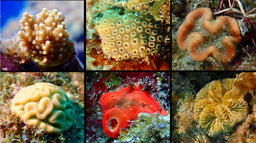Did P. falciparum undergo Industrial Revolution?
Published in Microbiology

We found Plasmodium falciparum translation enhancing factor (PTEF) to be a trans-acting factor required for efficient translation of var2csa. For this to happen, the proteolytic processing of PTEF by PfCalpain is required, generating a C-terminal domain that facilitates the translational de-repression of the var2csa coding sequence.
And its mechanism of action was a big surprise. Given the exceptional nature of the event, we expected to find a very particular interaction only between the var2csa transcript and PTEF, but that was not the case. Instead, PTEF could prompt translation in an in vitro E. coli system as well. This suggested a totally different mechanism of action that we had not considered. In deed PTEF must interact with a highly conserved components of the ribosome and during a conserved step of translation.
Despite a strong correlation between transcriptome and proteome, there is significant delay between maximum mRNA abundance and peak protein expression, indicating post-transcriptional and translational regulation are important1,2, but very few regulator molecules have been described. PTEF is the first non-canonical ribosome binding protein that can promote translation in P. falciparum.
But what does this imply? We believe it adds to the idea of the cell having ‘specialized ribosomes’. PTEF could be regulating a subset of uORF- containing RNAs that are related in function, and that are translated by a subset of ‘specialized ribosomes’ that designedly adopt differential features and adapt to the necessity of the parasite3,4.
Notably, all plasmodial ribosomal RNA gene copies are non-identical, and the expression of each rRNA copy is stage-dependent5,6, suggesting that the presence of heterogeneous ribosome populations could be a biological feature of the parasites.
Lets think of the parasite as a factory, where the ribosomes are the main machines in a production line with proteins as the final products. Then it would make sense to have different ‘ribosome machines’ that can respond and adapt to changes in the demand, it would make the factory efficient. As Dinman puts it “…it is unrealistic to assume that the evolutionary process has selected for a unique macromolecule that has been maximized for its ability to translate a near-infinite number of mRNAs in response to a near-infinite number of stimuli.”
There is lots of work left to do, of course. The obvious next step for us is to understand the nature of the interaction between PTEF and the ribosome and identify which group of transcripts can be affected by it.
The paper in Nature Microbiology is here: http://go.nature.com/2pBmhGP
1 Le Roch, K. G. et al. Global analysis of transcript and protein levels across the Plasmodium falciparum life cycle. Genome Res 14, 2308-2318, doi:10.1101/gr.2523904 (2004).
2 Mair, G. R. et al. Regulation of sexual development of Plasmodium by translational repression. Science 313, 667-669, doi:10.1126/science.1125129 (2006).
3 Dinman, J. D. Pathways to Specialized Ribosomes: The Brussels Lecture. J Mol Biol 428, 2186-2194, doi:10.1016/j.jmb.2015.12.021 (2016).
4 Xue, S. & Barna, M. Specialized ribosomes: a new frontier in gene regulation and organismal biology. Nat Rev Mol Cell Biol 13, 355-369, doi:10.1038/nrm3359 (2012).
5 Velichutina, I. V., Rogers, M. J., McCutchan, T. F. & Liebman, S. W. Chimeric rRNAs containing the GTPase centers of the developmentally regulated ribosomal rRNAs of Plasmodium falciparum are functionally distinct. RNA 4, 594-602 (1998).
6 Li, J., McConkey, G. A., Rogers, M. J., Waters, A. P. & McCutchan, T. R. Plasmodium: the developmentally regulated ribosome. Exp Parasitol 78, 437-441, doi:10.1006/expr.1994.1051 (1994).
*Image inspired in the poster of the movie "Modern Times"





Please sign in or register for FREE
If you are a registered user on Research Communities by Springer Nature, please sign in